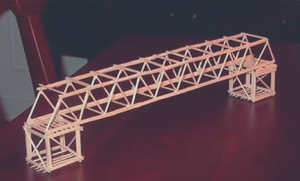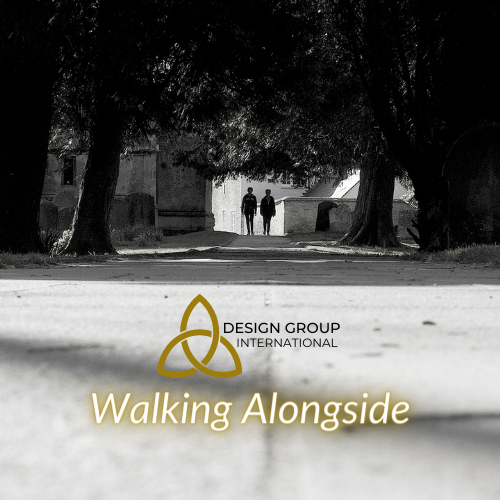
Build the best
Remember those constructed toothpick bridge competitions in school? I remember witnessing as a former middle school teacher the excitement and looming expectations as student teams designed their bridges. In my school, the competition was also over building the most protective egg launcher or designing an air rocket built from 2-liter bottles battling for the longest flight. These student teams were fully engaged and in charge of their final decisions before project-based learning became a recognized curricular design that unpacks desired student learning in powerful ways.
Listening Architecturally is helping clients design what is needed and what they are willing to do to transform their “IT.” When process consultants show up Listening Architecturally, we are helping clients build their best version of what to them symbolizes their weight-bearing toothpick bridge, create their best egg launcher, or design their rocket to go the distance for the win.
A client organization that I and a colleague are currently working with is building their toothpick bridge. They desire the end product to be sustainable, replicable, and to effectively transmit the sought-after knowledge all the while building relevant connections complete with tools for the journey. A hefty task for sure! But one, we as process consultants are equipped to assist leaders to build, test, re-design, implement and continue to iterate. Listening Architecturally is an important way to get there.
These current clients have identified a body of knowledge they want to be conveyed, made relevant, and embodied for the future of a group of supervisors. This is what we knew when we began our formal relationship of being a helper to this organization.
Understand the Why
In process consulting, we expect to spend a large amount of time front-loading the understanding of Why the client desires a helping partner. We look to identify the “IT” and determine how the client believes they can achieve their stated goal and what they are willing to do. How have we been Listening Architecturally with this organization thus far a few months into a several-month agreement?
-
We met with the senior leadership team member for an initial discovery call in October to listen and identify Why they wanted help and What the asks were and whether we at Design Group International were a good fit.
-
Through a series of important back and forth clarifications, we reached an agreement in November with the client detailing at that time the understood Why, Who, What, Where, When, and How pertaining to their need. One result of Listening Architecturally is we originally understood the Who to include up to ten staff members being present per supervisor for the training sessions. With further listening, we re-built our agreement to reflect the client’s emerging desire that the Who would simply be the Leadership Managers and on-site Supervisors but not their staff, which is now correctly reflected in our agreement.
-
We met then with the full leadership team in early December to further understand their needs to build our helping response most effectively. We learned then that the Why for this partnership was built much more on a desired wellness aspect for their staff than we had anticipated. This became an important frame through which to rewrite and design our sessions in the future. Specifically, we built in more relationship-building time in each upcoming session than we might have pre-pandemic. We heard that the lack of travel on-site, the high turnover staff rates, and the political polarization that has affected their industry these past few years has made being known and cared for more important than ever. By Listening Architecturally, we can respond to that need in our design planning.
-
In January, we leaned into learning to know each leadership manager by meeting one-on-one with them for listening sessions. We learned further the importance of attention given to setting safe cultures for any training sessions that were yet to come for their staff supervisors. A goal of psychological safety became a more prominent frame written in our undergirding expectations for each upcoming session based on this feedback.
-
In February we tested with all the leadership managers a design format for five upcoming sessions with their staff supervisors complete with curricular emphases to help them convey and make applicable the content important to their roles. We adaptively updated the What based on their feedback giving more prominence to routinely examining mental models (how are they thinking about their thinking) and expanded our How agreeing to mix up the small groups to occasionally meet within their similar roles instead of only with their managers for small group practice work.
-
In February we followed up on what we heard from the leadership managers' design meeting with the administrative leaders. We fine-tuned more of the What entries in our five-session upcoming training using the language of the managers changing words like “training” to “session” and including oft-repeated phrases into our content that they valued like, “boundaries” and “the importance of active listening” and “honoring the centrality of relationship.” The Who surfaced again with a request for freedom of choice to join whichever group’s case study most replicated one’s need as a supervisor and we happily added this strategy to our road map based on the suggestion of the senior administrator.
Next, we will meet with the invited supervisory participants over an informational meeting using all we have learned thus far by Listening Architecturally conveying how we can help by unpacking a body of knowledge they as supervisors will benefit from in their roles. Our commitment as process consultants is to continually practice Listening Architecturally and to hold loosely to our plans because we want to be able to pivot quickly in order to best serve our clients by responding to any new understandings. We expect clients to learn more about their needs as we together dig deeper into their current reality versus their end goals. I and my colleague are committed to this relationship with the administrators, leadership managers, and supervisors of this large organization through June helping them learn from each other, from the skill at hand understudy and conversation, and for them to be equipped in order to next replicate this learning, practicing, and applying process going forward to support other supervisors.
Toothpick bridges take time. They are continually under pressure to be stronger and are often re-designed midstream to bear the weight of their anticipated stressors. Process consultants are equipped to help leaders and organizations zero in on the Why, Who, What, Where, When, and How while nimbly re-designing the roadmap where needed together to best meet the client’s goals. Each toothpick bridge is uniquely its own and beautiful. We are here to help you design yours. We look forward to your call.
Note: Thanks to Matt Visser Senior Consultant with Design Group International for partnering with me with this client and their many members by Listening Architecturally.
Walking alongside,
 Dawn Graber
Dawn Graber
Design Group International
Senior Consultant
The core competencies of process consulting have been developed and are taught by the Society for Process Consulting. If you are interested in receiving your credential in process consulting please visit our website.
Tags:
process design, process consulting, kim stezala, Design Group International, listening, helping, learning, Ed Schein, organizational consulting, business consulting, hiring a consultant, workplace dynamics, client-owned, helping professions, Walking Alongside Blog
March 2, 2022

Comments